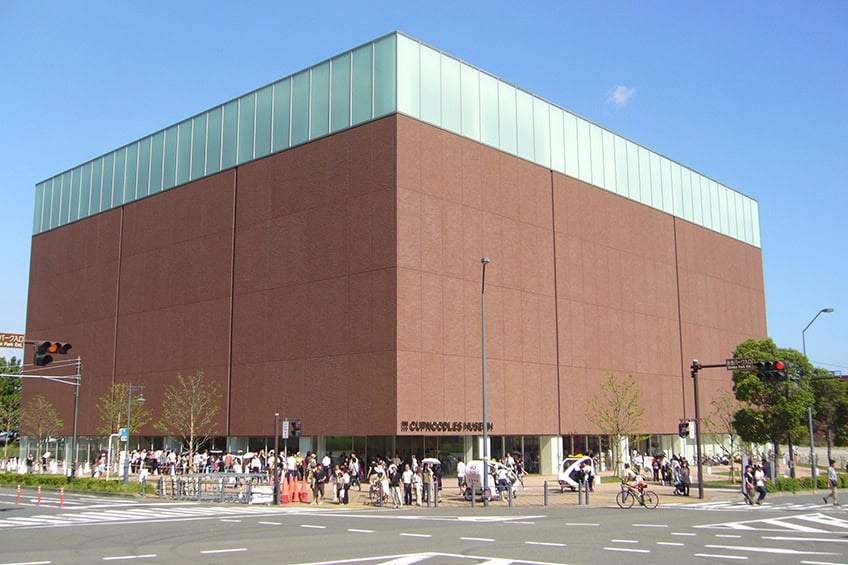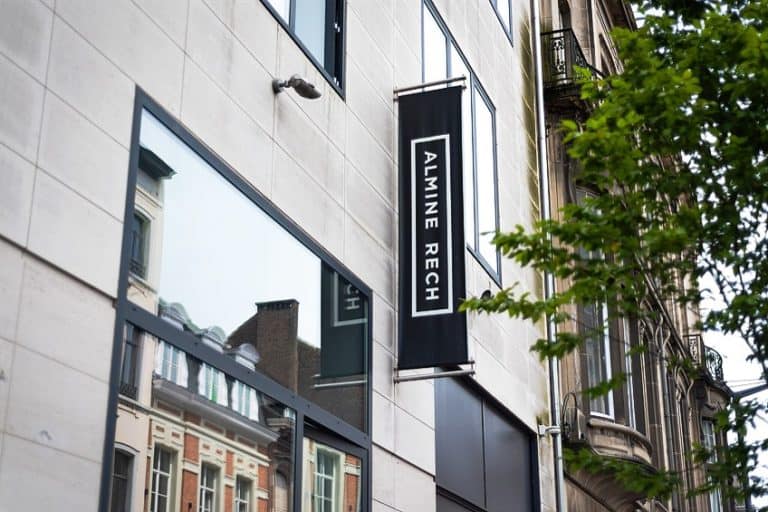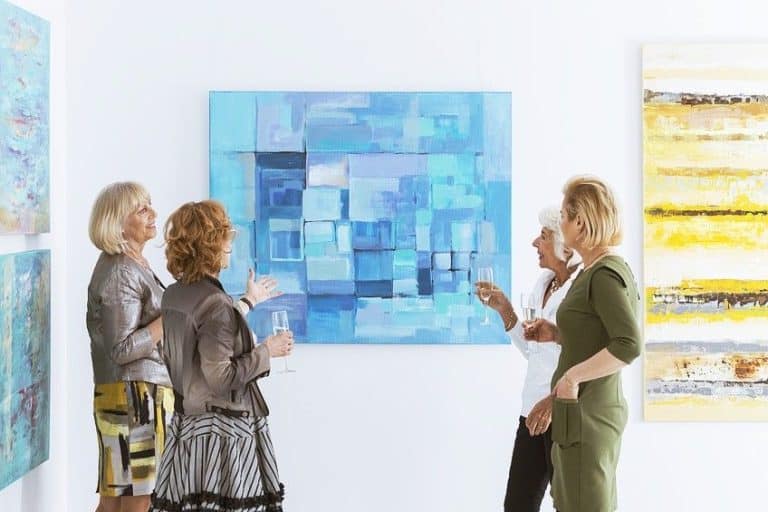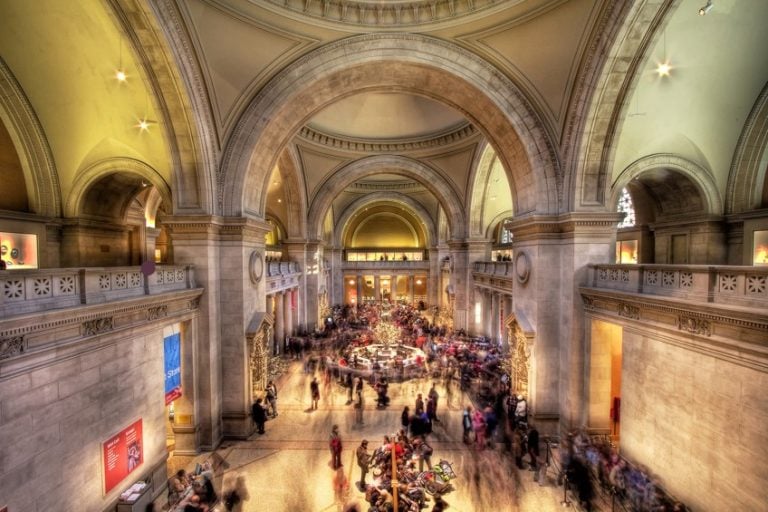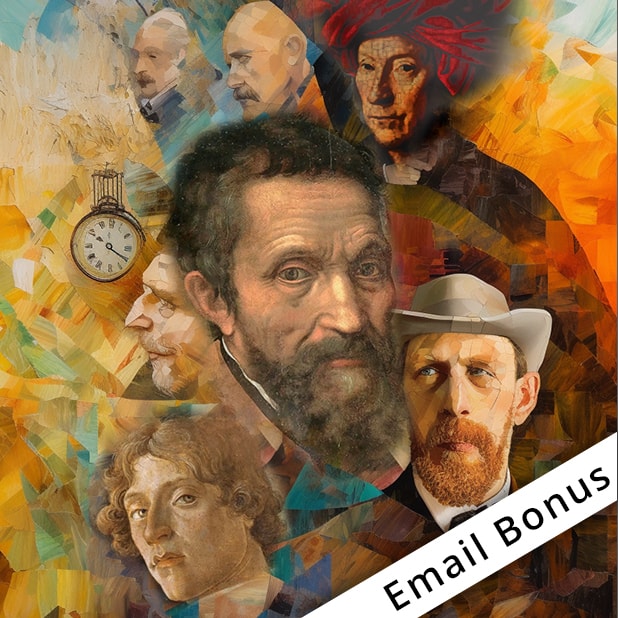12 of the Most Unusual and Weird Museums in the World
Exploring museums usually brings to mind exhibits of historical artifacts and cultural treasures, yet there’s a world of eccentricity waiting in the least expected places. Some of the world’s museums defy convention by showcasing collections dedicated to the strangest and most bizarre subjects imaginable. From hair locks to shadows of myth, these institutions invite visitors to reconsider what constitutes a museum’s worthiness. Imagine finding yourself among displays of offbeat curiosities, like mummified creatures or objects rescued from failed romances. These places offer experiences that are as unique as they are thought-provoking, often capturing the attention of the curious and adventurous. Here, you can dive into the oddity of everyday items reimagined as objects of fascination. Venture along paths less traveled by art and history enthusiasts, and discover museums that challenge norms while celebrating peculiarity. Whether you’re intrigued by the supernatural, curious about culinary innovations, or fascinated by personal relics from the past, these museums promise to leave an impression that is as lasting as it is unusual.
Key Takeaways
- Some museums showcase oddities and curiosities that challenge traditional norms.
- These unique collections invite visitors to consider different cultural and historical perspectives.
- Traveling to these museums offers fresh and intriguing experiences.
Museum of Bad Art
The Museum of Bad Art showcases artworks that do not conform to conventional standards of beauty or skill. Founded in the basement of a 1912 movie theatre, this quirky museum is located in Massachusetts. It is a celebration of pieces created with sincerity, despite falling short by traditional artistic evaluations.
Visitors can view a collection of paintings, sculptures, and other media that stand out due to their unusual execution or unexpected themes. Each piece is carefully selected to prompt a unique reaction, be it surprise or amusement. The museum delights in its mission to display “art too bad to be ignored.”
A notable part of the collection began with an oil painting discovered in the trash. This set the stage for further acquisitions, featuring works from both unknown and amateur artists. The museum is a testament to the assertion that art can be as much about personal expression as technical skill.
Whether you’re an art aficionado or a curious visitor, the Museum of Bad Art invites exploration of what art truly means. Its peculiar exhibits provide a fascinating journey into the heart of creativity that dares to defy expectations. Learn more about it at the museum’s dedicated exhibit page.
Avanos Hair Museum
The Avanos Hair Museum, nestled in the small town of Avanos in Cappadocia, Turkey, presents an unusual yet fascinating attraction. This museum, established by local potter Chez Galip, features thousands of locks of hair displayed on the walls of a subterranean cave-like space.
Origins and Setup
Chez Galip founded the museum in the 1970s as a quirky side to his renowned pottery studio. Women visiting the studio began leaving locks of their hair, and over the decades, this collection grew significantly.
Collection Size
It’s estimated that over 16,000 locks of hair are on display. Each lock is accompanied by a note, adding a personal touch to this unconventional exhibit.
Visitor Experience
The museum is often described as eerie yet intriguing. Visitors can spend time exploring the dense arrays of hair decor, each representing personal stories. The dimly lit environment, combined with the unique contents, makes for a truly one-of-a-kind museum experience.
Interactive Element
Visitors of the museum often have a chance to contribute to the collection. If they wish, they can leave a piece of their own hair, becoming part of this living and growing display. The Hair Museum of Avanos continues to attract curious tourists and stands as a testament to human curiosity and creativity.
Museum of Broken Relationships
The Museum of Broken Relationships is a fascinating destination in Zagreb, Croatia. Founded in 2006 by Dražen Grubišić and Olinka Vištica, it focuses on items left behind from former relationships. Each piece has its own backstory, adding depth and emotion to the collection.
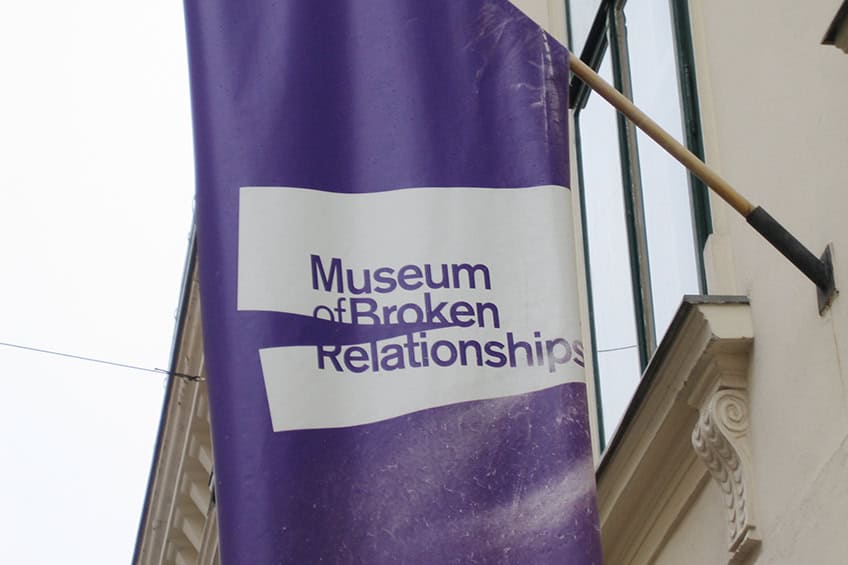
Estsiiri, CC BY-SA 4.0, via Wikimedia Commons
Visitors encounter a diverse range of objects. From letters and photographs to personal belongings such as shoes and teddy bears, every exhibit tells a poignant story. Notably, there is even an ax that once played a significant role in a breakup.
This museum is not only in Croatia. A traveling version of the collection has reached audiences worldwide, gathering new items at each stop. The concept has resonated with many, leading to permanent exhibitions in locations like Los Angeles.
Exhibit Highlights:
- Video Confessionals: Personal stories and reflections captured on film.
- Romantic Memories: Items once cherished by couples now serve as symbols of past love.
For anyone intrigued by the human experience of love and loss, the Museum of Broken Relationships offers a unique perspective. It provides visitors with an opportunity to reflect on the universal nature of heartbreak. This has made it one of the most recognized unusual museums globally, as noted by Culture Trip.
Sulabh International Museum of Toilets
The Sulabh International Museum of Toilets in Delhi is an intriguing establishment dedicated to the history of sanitation and toilets. Established in 1992 by Dr. Bindeshwar Pathak, a social activist, it highlights the evolution of toilets from ancient to modern times.
Visitors can explore artifacts from different regions and eras. The museum showcases fascinating toilet designs, from the ones used by ancient civilizations to contemporary models.
Key Highlights:
- Displays include porcelain pieces, chamber pots, and toilet furniture.
- Detailed history of sanitation practices across cultures.
- Focus on innovations that improved hygiene and public health.
According to Time magazine, the museum ranks among the “10 museums around the world that are anything but mundane,” offering a unique look into an often overlooked aspect of daily life.
Unique Features:
- Educational panels that explain historical developments.
- A section dedicated to the influence of toilets on social norms.
The Sulabh International Museum aims to educate the public on the importance of sanitation and its impact on society. It stands as a testament to how the humble toilet has played a crucial role in human development and well-being.
International Cryptozoology Museum
The International Cryptozoology Museum is a fascinating destination located in Portland, Maine. It stands out as the world’s only museum dedicated to the intriguing study of cryptozoology. This field delves into the research of hidden and undiscovered creatures, such as Bigfoot and the Loch Ness Monster.
Visitors are greeted by a variety of unique exhibits. The museum features artifacts and displays that include hair samples, footprint casts, and even alleged eyewitness accounts from around the globe. Each exhibit is designed to inspire curiosity and provoke thought regarding these elusive creatures.
The museum was the brainchild of Loren Coleman, a renowned cryptozoologist. He founded it to provide a space for enthusiasts and skeptics alike to explore the unknown and challenge conventional scientific beliefs.
In addition to permanent exhibits, the museum frequently hosts special events and guest lectures. These events provide deeper insights into the world of cryptozoology, offering updates on recent developments and ongoing investigations in the field.
For those interested in the mysterious world of undiscovered creatures, the International Cryptozoology Museum represents an intriguing destination that combines education with wonder. It encourages visitors to ponder the endless possibilities of what may still be hidden in the vast unexplored regions of our planet.
Museum of Death
The Museum of Death in New Orleans, USA, stands as one of the most intriguing establishments for those fascinated by the macabre. This unique museum provides a rare insight into the art, culture, and history associated with death, extending beyond the ordinary themes typically explored in mainstream museums.
Visitors can explore exhibits featuring a variety of unsettling artifacts. These include original crime scene photographs, Manson Family memorabilia, and even mortician instruments. Each item is meticulously curated to provide a comprehensive view into the darker aspects of human history.
The experience is designed to educate and provoke thought, rather than sensationalize. It offers visitors an opportunity to challenge their perceptions of mortality, making it not just an unusual museum, but an educational one.
For those interested in unusual museums, the Museum of Death does not hold back. The collection underscores the varying cultural practices surrounding death and the impact of famous criminal cases.
With its distinct approach to a traditionally somber subject, the Museum of Death offers a unique visit. It intrigues both those with a casual interest and serious academic researchers focusing on the themes of death and societal reactions to it.
Cup Noodles Museum
The Cup Noodles Museum in Ikeda, Japan, celebrates the invention of instant noodles by Momofuku Ando. This innovative museum provides visitors with a glimpse into the history and impact of a simple yet revolutionary food product.
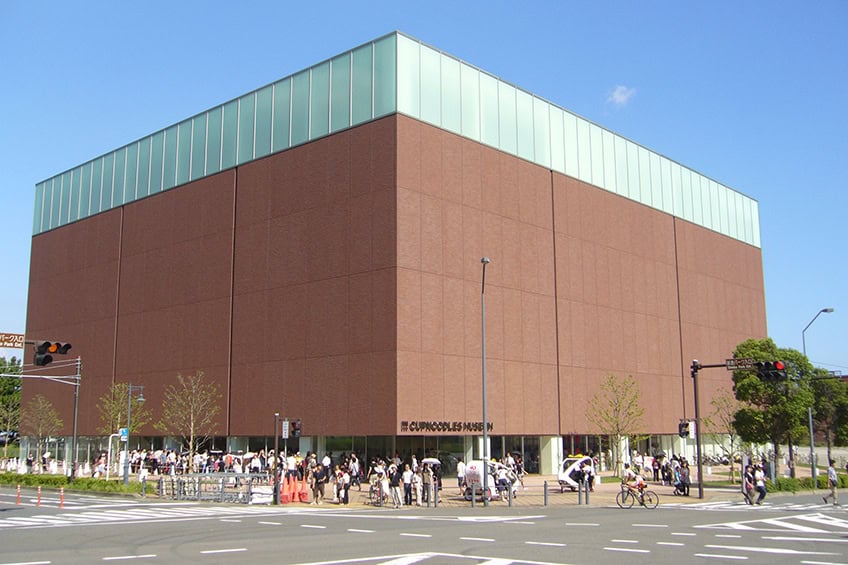
CEFICEFI, CC BY-SA 3.0, via Wikimedia Commons
Visitors can explore an Instagram-worthy hall displaying 800 instant noodle packages from around the world. This collection illustrates the global popularity of this quick and convenient meal option.
One of the museum’s interactive features allows guests to create their own Cup Noodles. With 5,460 possible flavor combinations, it provides a fun and personalized experience for noodle enthusiasts.
The museum also includes a faithful replica of the shed where Momofuku Ando first invented instant noodles. This space pays homage to the ingenuity and perseverance of Ando’s work during the post-World War II era.
For a deeper dive into Ando’s journey, the Momofuku Ando Instant Ramen Museum in Osaka provides additional insights. It showcases the creative process and challenges that led to the development of this iconic food.
Through interactive exhibits and personal stories, both museums celebrate the humble beginnings and extraordinary global influence of instant ramen.
Salt and Pepper Shaker Museum
Located in Gatlinburg, Tennessee, the Salt and Pepper Shaker Museum is a unique attraction that showcases over 20,000 pairs of salt and pepper shakers from around the globe. This diverse collection features shakers in various styles, sizes, and themes, reflecting cultural and culinary histories.
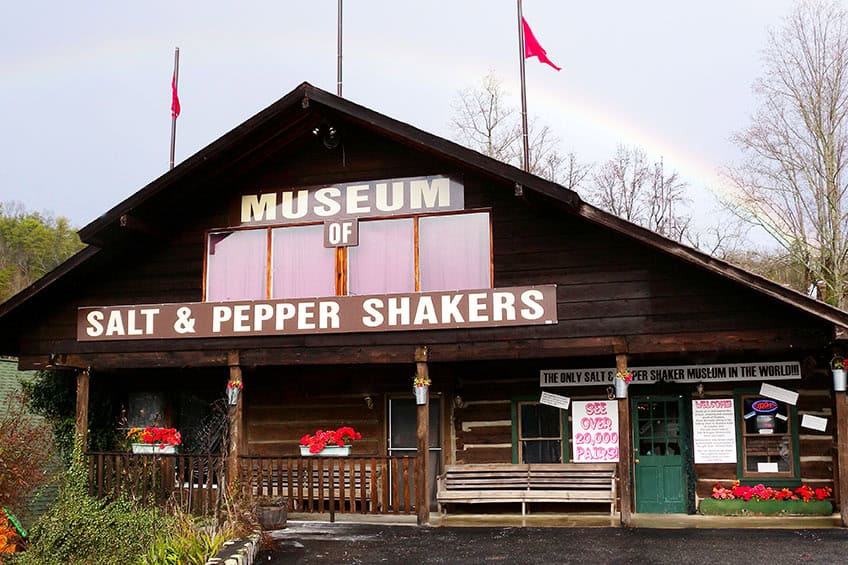
Aludden1, CC BY-SA 4.0, via Wikimedia Commons
The museum also houses a large pepper mill collection, adding another layer of interest for visitors. The vast array of exhibits attracts both casual visitors and serious collectors.
This museum is often highlighted in lists of unusual museums, commendable for its whimsical nature and eclectic displays. It is not only a delight for culinary enthusiasts but also for anyone interested in unique collectibles.
Additionally, there is a sister museum situated in El Castell de Guadalest, Spain, enhancing its international appeal. These museums work together to preserve the stories and artistry behind each pair of shakers, emphasizing their cultural significance.
Visitors can explore the virtual museum online for a preview of the collection. This feature offers an accessible way to experience the museum’s charm from anywhere in the world, encouraging greater interest in its mission and scope.
Museum of Miniature Books
The Museum of Miniature Books in Baku, Azerbaijan, is a unique destination for bibliophiles and curious visitors alike. This museum showcases an extensive collection of over 5,600 miniature books, representing publications from 66 different countries. It is renowned as the largest private collection of its kind.
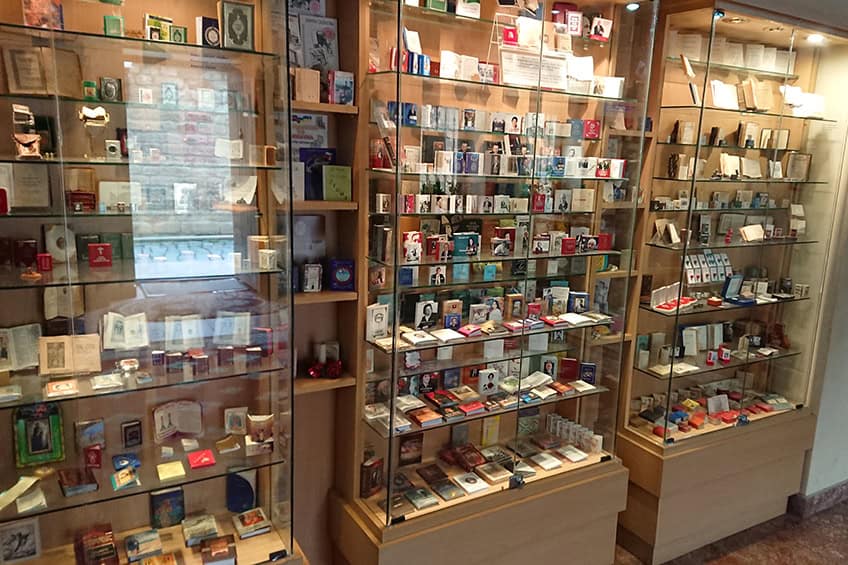
Stanislav Kozlovskiy, CC BY-SA 4.0, via Wikimedia Commons
One of the museum’s most extraordinary pieces is an ancient copy of the Quran from the 17th century. The diversity of subjects is remarkable, ranging from children’s literature to music, including a book of Beatles song lyrics.
Highlights:
- Location: Baku, Azerbaijan
- Number of Books: Over 5,600
- Countries Represented: 66
- Year of Opening: 2002
The collection was meticulously compiled over several decades by Zarifa Salahova. The museum continues to evolve with ongoing donations from book enthusiasts worldwide. The Museum of Miniature Books offers a fascinating glimpse into the world of miniature literature, making it a noteworthy stop for those traveling through Azerbaijan.
Mini Bottle Gallery
The Mini Bottle Gallery in Oslo, Norway, is the only museum of its kind in the world. It proudly houses the largest collection of miniature bottles on the planet. With over 53,000 bottles celebrated among its exhibits, it captures visitors’ imaginations with its unique charm and scale.
The museum spans three stories and offers more than 50 intriguing installations. Each display showcases a diverse range of miniature bottles filled with various liquids. The gallery reflects a wide array of both alcoholic and non-alcoholic beverages.
Visitors can explore bottles that vary in style, color, and content. Each piece in the collection is meticulously arranged to offer a captivating visual spectacle. From spirits and beers to sodas, the variety impresses even seasoned collectors.
Located in the heart of Oslo, this gallery emphasizes entertainment alongside its historical and cultural value. Its unique position in the world of museums draws enthusiasts from various corners of the globe.
For those interested, the Mini Bottle Gallery offers a playful yet rich insight into the world of tiny containers. The design and presentation make it a must-visit for anyone intrigued by rare and peculiar collections.
Kunstkamera
The Kunstkamera in Saint Petersburg, Russia, stands as the country’s first museum. Founded by Peter the Great in 1727, it is known for its intriguing collection of curiosities. This museum is located prominently on the banks of the Neva River and serves as a symbol of the city.
Visitors to Kunstkamera will find an assortment of natural and historical artifacts. The museum holds an impressive ethnographical collection that highlights its importance in promoting scientific and cultural knowledge.
One notable aspect of Kunstkamera is its focus on objects that may seem bizarre and unusual. This includes anatomical oddities, historic items from various cultures, and peculiar specimens collected by Peter the Great himself.
Among the most captivating exhibits are the preserved human and animal specimens. These items, initially collected for research purposes, now serve as educational tools and objects of fascination to the public.
The Kunstkamera remains a must-visit destination for those interested in anthropology and ethnography. Its unique blend of history, science, and culture provides visitors with a distinct perspective on the world during the time of Peter the Great.
For additional insights about the museum, explore its diverse offerings through a visit. More information about its leadership and historical significance can be found on CNN’s overview of the world’s weirdest museums.
Parasitological Museum
The Meguro Parasitological Museum in Tokyo, Japan, offers a unique and intriguing experience. Established in 1953, it is dedicated solely to parasites and aims to inform about their biology and impact on humans and other animals.
This small museum is a haven for curious minds seeking to explore a world often hidden from sight. The collection includes over 60,000 specimens, with around 300 displayed at any time. Visitors can find the world’s longest tapeworm, measuring nearly 29 feet long.
The museum is divided into two floors. The first floor exhibits provide insights into various parasitic life forms, while the second floor showcases parasites specifically affecting humans. Fascinating labels and explanations accompany each specimen, inviting guests to learn more about these enigmatic creatures.
Visitors can purchase parasite-themed souvenirs from the museum shop, including T-shirts and key chains. Conveniently, entry is free, although donations are welcome to support its educational initiatives. A true gem for anyone interested in biology and the unseen life around us, the Meguro Parasitological Museum is a truly unique destination that invites curiosity.
The museum also serves educational purposes, providing valuable insights for researchers and students. This feature, combined with its quirky appeal, attracts a diverse crowd, from tourists to scientists.
Dog Collar Museum
The Dog Collar Museum in Kent, England, is a unique attraction dedicated to the history of canine neckwear. It offers a charming glimpse into five centuries of canine fashion, showcasing over 130 collars.
Situated within Leeds Castle, the collection has been captivating visitors since 1976. This museum provides an intriguing perspective on the roles and status of dogs through the ages.
Exhibits include collars from the Elizabethan era, showcasing intricate metalwork, as well as 19th-century designs featuring leather and brass. Some collars are adorned with inscriptions and decorations that reflect their historical context and usage.
The museum not only celebrates the evolution of dog collars but also highlights their cultural significance. By visiting, one can gain insights into how the treatment and role of dogs have transformed over time.
Facilitating a broad understanding of history through a niche lens, the museum attracts both dog enthusiasts and history buffs. To learn more about this distinctive venue, visit their listing on the world’s weirdest museums.
This small yet captivating museum is a testament to the rich, often unexpected, history behind everyday objects.
Bunny Museum
The Bunny Museum, once a beloved attraction in Altadena, California, was a whimsical haven dedicated entirely to rabbits. Founded by Candace Frazee and Steve Lubanski, it held a Guinness World Record for its staggering collection of over 48,000 rabbit-themed items, ranging from ceramic bunnies and stuffed toys to rabbit-inspired jewelry and even a giant rabbit topiary. For nearly three decades, it captivated visitors of all ages, celebrating the cultural significance of rabbits while offering a playful and educational experience.
Tragically, the museum was destroyed in the devastating Eaton Fire that swept through Los Angeles roughly three weeks ago. The fire, which consumed over 10,000 acres and claimed several lives, reduced the iconic museum to ashes. Steve Lubanski, the co-owner, shared his heartbreak, noting that while he and his wife were able to save their pets and a few cherished items, the building and the vast majority of their collection were lost.
Despite this immense loss, the spirit of the Bunny Museum lives on. Lubanski expressed hope that the museum’s legacy would continue, a testament to the decades of love and dedication he and his wife poured into creating this unique space. The museum, which had been featured on shows like Ripley’s Believe It or Not! and in the Guinness Book of World Records, will forever remain a symbol of joy and creativity for the community and bunny enthusiasts worldwide.
Interesting Features of the Bunny Museum (1995–2025):
- A bunny boot showcase
- Collections of bunny-themed artwork
- Rabbit-inspired jewelry and memorabilia
While the physical space is gone, the memories and impact of the Bunny Museum endure, reminding us of the beauty and fragility of the places we hold dear.
Museum of Enduring Beauty
The Museum of Enduring Beauty, located in Malacca, Malaysia, offers a fascinating exploration of beauty standards throughout different eras and cultures. This unique museum is part of The People’s Museum and provides insight into how beauty ideals have evolved over time.
Visitors encounter exhibits showcasing diverse practices, including foot binding in ancient China and tribal body modifications in Africa. These displays reveal the lengths to which people have gone to meet society’s beauty standards, emphasizing the cultural significance behind these practices.
The third floor of the museum is specifically dedicated to these extraordinary exhibits. The displays not only focus on ancient customs but also highlight contemporary examples of beauty trends, allowing visitors to reflect on their own perceptions of beauty.
Guests should be prepared for an evocative experience as this collection may challenge their views. Some areas of the museum invite contemplation on how societal pressures influence the pursuit of beauty. Viewing these practices offers an opportunity for cultural understanding and appreciation.
For those intrigued by the extremes of human behavior, this museum provides an eye-opening journey into aesthetics and cultural anthropology. Through photographs, artifacts, and explanations, the museum creates a compelling narrative of the human desire to achieve beauty.
This thought-provoking exhibition is considered a must-visit for individuals interested in anthropology and cultural studies. Visitors can deepen their knowledge and appreciation for how beauty has been perceived by various societies across history.
Underwater Museum of Art
The Cancun Underwater Museum of Art, known as MUSA, offers a unique experience for visitors. Located in the clear waters of the Mexican National Marine Park, it is one of the few museums you need snorkeling gear to explore.
Over 500 life-sized sculptures are submerged here, creating a captivating underwater gallery. The artworks are crafted from pH-neutral marine concrete, encouraging coral reef growth and marine life habitation. This promotes environmental awareness while providing a striking visual experience.
Visitors can glide over these sculptures while snorkeling, observing how marine life interacts with art. The museum serves both as a tourist attraction and an artificial reef, contributing to marine conservation efforts. Whether you’re an art enthusiast or a marine life lover, MUSA offers a spectacular adventure.
With installations that span a vast area under the sea, this museum redefines the relationship between humans and the ocean. Exploring its depths isn’t just about enjoying art; it’s about engaging with a living ecosystem. Here, art and nature coexist harmoniously, making it a must-visit for those seeking an extraordinary experience.
For anyone planning a visit, it is advisable to book a snorkeling tour to fully appreciate the underwater marvels of this museum. It’s an encounter with art and nature that few other places on earth can provide, set against the stunning backdrop of a vibrant coral reef.
Icelandic Phallological Museum
The Icelandic Phallological Museum in Reykjavík is a one-of-a-kind destination. It opened in 1997, offering a unique look into biological specimens. Visitors can explore an extensive collection, featuring over 215 different phallic specimens.
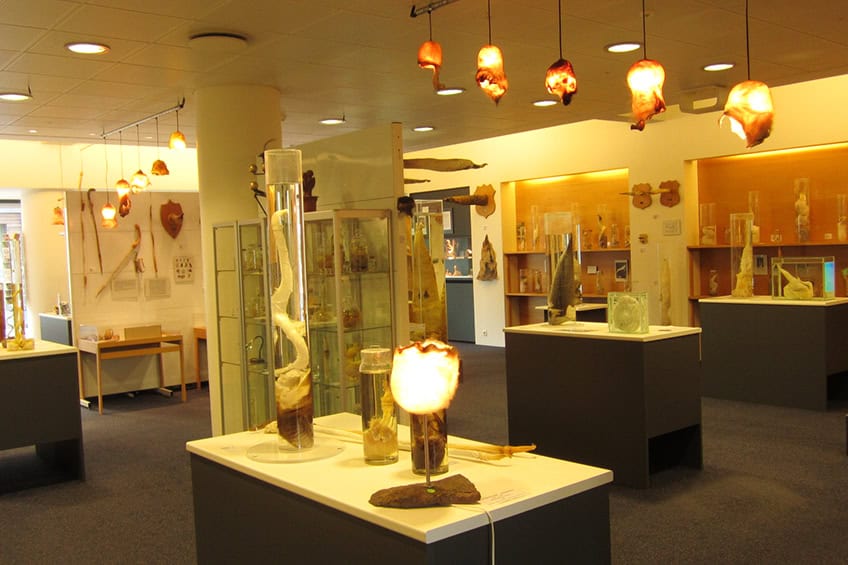
Witho F., CC BY-SA 3.0, via Wikimedia Commons
Displayed specimens come from a wide array of animals, including tiny hamsters and large Canadian walruses. Not only is it an informative experience, but it’s also accompanied by a variety of phallic art.
The museum attracts about 11,000 curious visitors annually. Reykjavik’s most unusual attraction is humorously educational, providing insights into mammalian biology found across Iceland. Notably, the museum is the only one in the world showcasing a complete collection of phallic specimens from each mammal in a single country.
Visitors can find the museum at Laugavegur 116, 105 Reykjavík. Its fame spreads globally, intriguing both locals and tourists. For anyone interested in quirky museums, this is a must-see. The strange yet captivating exhibits make it one of the weirdest museums worldwide.
Siriraj Medical Museum
The Siriraj Medical Museum, located in Bangkok, Thailand, is often referred to as the “Museum of Death” due to its extensive, unsettling displays. This unique facility is situated within Siriraj Hospital and consists of six distinct galleries, each focused on a different aspect of medical science.
The museum’s collection includes sections dedicated to forensics, pathology, and parasitology. The forensic museum, in particular, features evidence from criminal cases and allows visitors a glimpse into the grim details of forensic investigation.
A notable aspect of the exhibits is their graphic nature, which is why the museum may not be suitable for young or sensitive visitors. For those interested in medical history, the museum of the history of Thai medicine provides a fascinating overview of traditional practices.
Among the museum’s most intriguing displays are its mummies. Preserved bodies, including those of infamous criminals, are presented to illustrate various educational points about decay and preservation techniques.
For people interested in viewing unique anatomical specimens, the anatomical museum offers a rare look at human bodies and body parts, clinically preserved for educational purposes.
The Siriraj Medical Museum is not for the faint-hearted. Its offerings challenge visitors to confront the realities of human anatomy and medical conditions. Despite the challenging content, it remains a compelling site for those intrigued by medical curiosities and the macabre.
The museum is conveniently located at Siriraj Hospital, making it accessible for those exploring Bangkok’s rich cultural and educational landmarks.
Museum of Witchcraft and Magic
Located in Boscastle, England, the Museum of Witchcraft and Magic offers a fascinating glimpse into the world of witchcraft. Established in 1960 by Cecil Williamson, the museum has garnered attention for its vast collection of artifacts related to the practice of magic and witchcraft.
In the museum, visitors can explore an array of talismans and ritualistic objects, alongside historical writings. The collection includes over three thousand objects and more than seven thousand books, creating a comprehensive archive of witchcraft history.
The museum’s exhibits cover intriguing topics like spell books and potions, providing insights into the rituals and beliefs of witches throughout history. Notably, there is a section dedicated to infamous witch trials, where visitors can learn about the persecution faced by alleged witches.
For those interested in the tangible aspects of magic, the museum’s displays include items used in actual witchcraft practices. These elements allow visitors to better appreciate the cultural and historical significance of these practices throughout generations.
Alongside its informative exhibits, the museum frequently hosts events and discussions focused on the history and modern perceptions of witchcraft. Such activities make the museum a dynamic space for learning and exploration.
This renowned institution also serves as a vital resource for researchers and enthusiasts, providing valuable information on the subject. For anyone intrigued by the mystical and magical, the Museum of Witchcraft and Magic in Boscastle is a fascinating destination to consider visiting.
Condom Museum
The Condom Museum is located in Thailand and offers an intriguing glimpse into the history and evolution of condoms. This unusual institution was established by the Thai Health Ministry to promote safe sex and awareness about sexual health.
Visitors can explore a diverse collection of condoms, ranging from historical varieties to modern innovations. These exhibits showcase the changes in materials, design, and technology over time.
The museum provides educational insights into the importance of condoms in preventing sexually transmitted infections (STIs) and unwanted pregnancies. Interactive displays and informative panels engage visitors with practical demonstrations.
One notable exhibit is a timeline that traces the evolution of condom materials, from linen and animal intestines in the past to the latex versions used today. This chronological journey highlights the scientific advancements in creating more effective and comfortable options.
In addition to its educational purpose, the Condom Museum also seeks to dispel myths and misconceptions surrounding condom use, making it a valuable resource for both locals and tourists. The museum has become a destination for those interested in health and cultural history.
For its unique focus and educational approach, the Condom Museum stands out as a testament to the efforts in promoting sexual health awareness globally. Visitors leave with a better understanding of the pivotal role condoms have played in shaping public health policies.
Isabella studied at the University of Cape Town in South Africa and graduated with a Bachelor of Arts majoring in English Literature & Language and Psychology. Throughout her undergraduate years, she took Art History as an additional subject and absolutely loved it. Building on from her art history knowledge that began in high school, art has always been a particular area of fascination for her. From learning about artworks previously unknown to her, or sharpening her existing understanding of specific works, the ability to continue learning within this interesting sphere excites her greatly.
Her focal points of interest in art history encompass profiling specific artists and art movements, as it is these areas where she is able to really dig deep into the rich narrative of the art world. Additionally, she particularly enjoys exploring the different artistic styles of the 20th century, as well as the important impact that female artists have had on the development of art history.
Learn more about Isabella Meyer and the Art in Context Team.
Cite this Article
Isabella, Meyer, “12 of the Most Unusual and Weird Museums in the World.” Art in Context. March 28, 2025. URL: https://artincontext.org/most-unusual-and-weird-museums-in-the-world/
Meyer, I. (2025, 28 March). 12 of the Most Unusual and Weird Museums in the World. Art in Context. https://artincontext.org/most-unusual-and-weird-museums-in-the-world/
Meyer, Isabella. “12 of the Most Unusual and Weird Museums in the World.” Art in Context, March 28, 2025. https://artincontext.org/most-unusual-and-weird-museums-in-the-world/.


